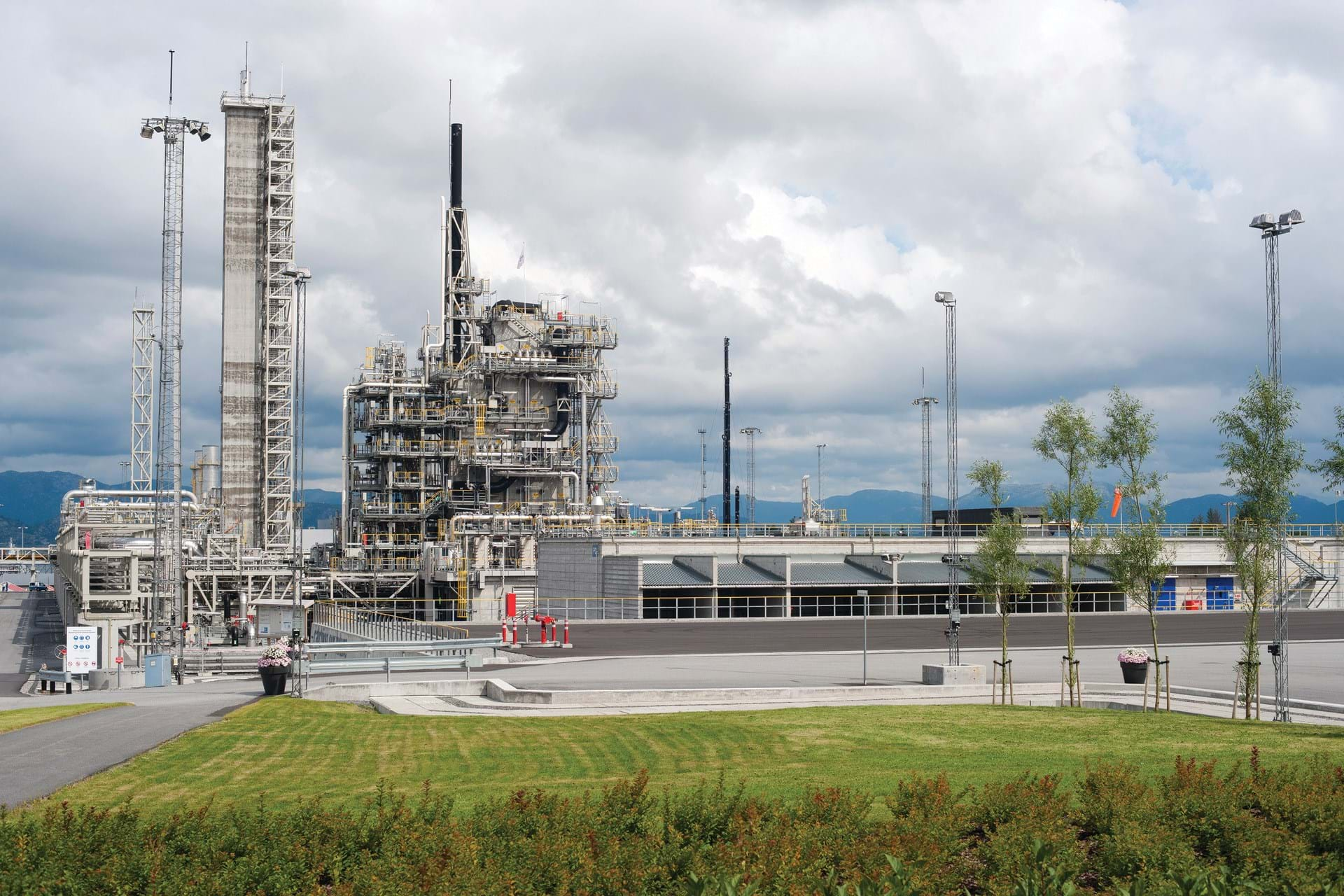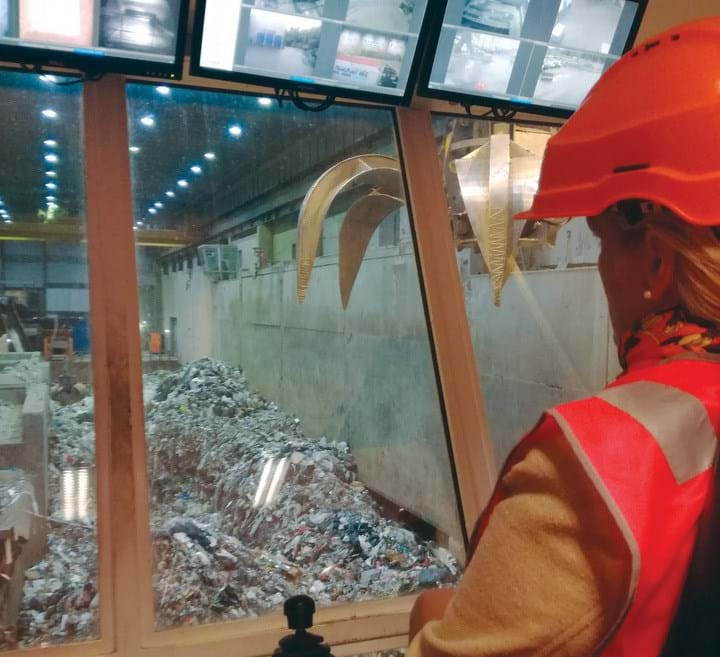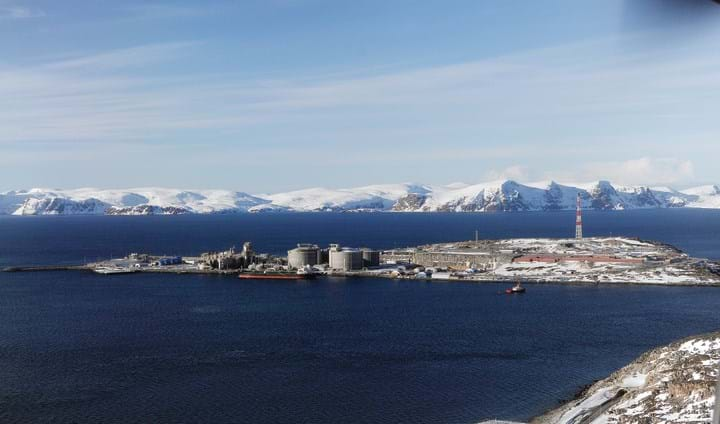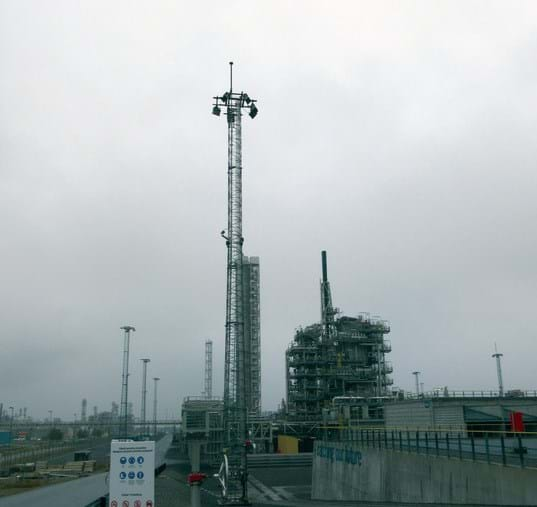CCS: Carbon Capture and Strategy
Helen Tunnicliffe goes on safari in Norway to learn about a government-backed scheme to set up a full-chain, full-scale CCS project

I HAVE been writing about carbon capture and storage (CCS) for almost nine years while at The Chemical Engineer. At the start, the news was always positive, with new projects being announced and funding won. As time wore on though, one by one, funding was cut and the projects were abandoned, especially in the UK.
It was all a little depressing. The simple fact is that according to the International Energy Agency (IEA), the world will need CCS if it is to have any hope of meeting the emissions reductions goals set out in the Paris Agreement. Renewables cannot yet meet the world’s growing energy demands and in many places and situations there is as yet no viable alternative to fossil fuels, so the world will need to continue to burn them for the foreseeable future. This is not to mention the vast number of industries, including cement and fertilisers, which necessarily and unavoidably make CO2 as part of the chemical process. CCS is their only option.
A little over a year ago, I interviewed the outgoing president of the UK’s Carbon Capture and Storage Association (CCSA), Lord Oxburgh, who recounted his immense frustration at the continued failure of the UK parliament to reach consensus on CCS, to always leave it to the next administration, and to keep cutting funding and making policy u-turns. It is a frustration I share. He, and many others, have repeatedly called for government policies that de-risk CCS, bring down the cost and make it attractive to industry and investors.
Imagine my delight, after all the doom and gloom, when at this year’s annual CCSA reception at the House of Lords, the guest speaker, Gassnova CEO Trude Sundset, told the gathered throng about Norway’s plans to implement a full-scale, full-chain CCS project by 2022, with cross-party support from the entire Norwegian parliament and industry backing. Too good to be true? Well, following discussions with Sundset, Gassnova communications manager Torund Bryhn, and my editor, I was on my way to Oslo to begin a ‘CCS safari’ to find out for myself.
The idea
Norway wants to build a full-chain CCS project, which includes a facility to capture CO2 emissions in an existing industrial facility, a means to transport that CO2, and a site in which to store it. It is hoped that the scheme will reduce the cost and risk for subsequent CCS projects.
“In Norway we are fortunate that we have a lot of experience in CCS. We have done CO2 storage in gas fields offshore and we have an engaged and interested industry, which is really key. We have the wealth, we have the drive policy-wise to do so. I’m very optimistic,” said Sundset.
Studies carried out so far have categorically proven that a full-chain CCS scheme in Norway is technically feasible. Those involved would not be drawn on the exact costs but said that the estimates resulting from their own studies were “good news”. The plan is to use only proven technologies, rather than anything complicated or untried at scale. The CCS project is currently at the concept and detailed engineering phase. Concept selection and front end engineering and design (FEED) for the capture and transport sections is expected to follow by the end of 2017, with concept selection and FEED for the storage initiated in Q1 2018. A final investment decision will be taken in Q2 2019.
There are several differences between Norway’s plans and others, however.
Firstly, Norway has set up a state enterprise, Gassnova, with the sole purpose of coordinating efforts and seeing CCS realised in the country. Gassnova has three main purposes. It manages Norway’s CCS interests, including the research hub Technology Centre Mongstad (TCM), advises the Ministry of Petroleum and Energy about CCS, and works to extend and disseminate CCS knowledge and expertise. Together with the Research Council of Norway, Gassnova runs the CLIMIT programme to provide financial support for CCS research. It has an annual budget of €23m (US$27m) and funds more than 300 projects. Sundset, a chemical engineer by training with 20 years’ experience in the oil and gas industry, said that Gassnova wants other European countries to follow Norway’s lead.
Tybring-Gjedde: “98% of our electricity production is from hydropower, and 70% of our total energy production is from renewables. We are indeed a very green country. So why are we doing this? We believe that in this area also, in CCS, Norway should be at the forefront."
Secondly, as previously mentioned, there is universal support in the government, across all parties, to develop CCS in Norway. The country is currently in the throes of a general election, but whatever happens, whoever is elected, the CCS project is safe, purely because every single political party supports it and has committed to funding it. If you look at the figures, however, the enthusiasm seems perhaps strange.
“98% of our electricity production is from hydropower, and 70% of our total energy production is from renewables. We are indeed a very green country. So why are we doing this? We believe that in this area also, in CCS, Norway should be at the forefront,” said Ingvil Smines Tybring-Gjedde, the deputy minister in the Norwegian Ministry of Petroleum and Energy. “Planning is well underway and the ministry’s civil servants and our colleagues are doing a marvellous job on this project. I’m really proud to be a state secretary of this ministry.”
Her colleague Elnar Remi Holmen, also a state secretary in the petroleum ministry, pointed out that becoming a CCS leader is a chance for Norway to create a new industry, jobs and value in the future
Thirdly, while many failed CCS projects have focussed on power generation, the Norwegian CCS demonstration project will focus on industrial emissions, which account for 25% of global CO2 emissions.
Many CCS projects have failed because of the scope of CCS. Companies have struggled to take on the financial, regulatory and technical challenges of the full chain. So, the Norwegian government is making it easy, and splitting it all up. Industry point sources will only have to capture the CO2 emissions. The government will take care of the transport and storage parts, including the necessary infrastructure, and award separate contracts for them.
“This split responsibility is important I think. Industry can work on the things they know how to do and then we let others take care of the transport and storage,” said Sundset.
Three potential sites have been identified and are now part of a government tender to become the CO2 capture site: Klemetsrud waste-to-energy plant, Norcem’s cement plant in Brevik, and Yara’s ammonia plant in Porsgrunn. It is not yet clear whether one, two, or all three will form part of the final demonstration project, but all have an impressive claim on the prize.
Klemetsrud
On the safari, the first site we were taken to was the Klemetsrud waste-to-energy plant, the largest in Norway. It burns 405,000 t/y of non-recyclable waste, producing 148 GWh of electricity and 690 GWh of district heating. It is run by a joint venture, Fortum Oslo Varme, which includes energy firm Fortum and the City of Oslo. According to the site’s CCS director Pål Mikkelsen, the smell that greets you as you round the corner of the building to the business end is “the smell of money”. To the layman, it smells an awful lot like rotting rubbish. However, this plant is doing some seriously good work. Mikkelsen describes the plant as his “mission in life”.
In Europe alone, more than 80m t/y of waste is sent to landfill, which is not sustainable. Mikkelsen admits that recycling and material recovery is the best option for waste but there will always be some waste for which this is not an option. Energy recovery is then the best solution.

Non-recyclable waste comes into the Klemetsrud plant in bales on lorries after sorting at municipal waste plants to remove recyclables and food which can be used for biogas production. After drying and shredding, the waste is stored in 4,000 t bunkers. I was childishly delighted to see the giant claws that take the rubbish from the bunkers and drop it into the shafts down to the incinerators, to generate heat for district heating and to make steam for the electricity turbines. Remaining metal is recovered and ash can be sold as a building commodity. Mikkelsen pointed out that the emissions from the process are cleaner than ever before, and that carbon capture will be easy to implement.
“In 1994 when I started out in this business, you still had some problems with emissions, then technology made some leaps – activated carbon, fibre filters, scrubbers, catalytic NOx removal and so on. For us to remove CO2 is really just another step in a process we have been doing more than 20 years,” he said.
The pilot capture process trialled at the site earlier this year used a simple, well-used, well-understood amine capture process to capture 90% of the CO2. If successful in the government tender, the full-scale carbon capture plant will cover 5,500 m2. Some of the electricity generated will be used to regenerate the amines and release the CO2, which will then be dried, liquefied and piped 10 km to the nearest harbour for transport by ship.
Oslo City Council is fully backing the project. In June it passed its own climate and emissions strategy to reduce emissions by 50% by 2020 and by 95% by 2030, of which the Klemetsrud CCS project is a vital part. Under its “Climate Budget”, launched last year, carbon emissions are accounted for in the same way as money. Oslo’s efforts led to its selection by the EU as European Green Capital for 2019. Vice mayor of business development and public ownership Geir Lippistad said that he believes carbon capture from waste incineration will be of major international importance.
“Waste handling is one of the world’s greatest health, environmental and climate challenges. Oslo can initiate technology and market development and provide solutions that are transferable and scalable for other cities. That’s very important and I know it is very important for the government,” he said. Mikkelson describes the council as “brave” on environmental issues.
“If they are blue, red or green, the political leadership of Oslo have made a lot of important investment decisions. They were very early with optical waste sorting, biogas, waste incineration, district heating and so on. Oslo was a circular economy before that became a buzzword,” he said.
Norcem

I felt immediately at home at the great, grey, dusty, hulking cement plant at Brevik. It is unsurprisingly rather similar to the great, grey, dusty, hulking cement plant I can see out of The Chemical Engineer’s office windows in Rugby. Also, it was pouring with rain. Norcem director of sustainability Per Brevik told us intrepid explorers that the Brevik plant is the greenest cement plant in the world. Norcem’s parent company Heidelberg Cement has ambitious plans.
“Our mission is by 2030, our products should be carbon neutral over their lifecycle,” said Brevik. “All the carbon roadmaps delivered in Brussels have an end date of 2050, but if you are going to achieve these goals you need to start now, and that’s what we are doing. It’s ambitious but it’s a vision.”
According to Heidelberg’s plan, cement should currently be produced at around 700 kg of CO2 per ton of cement. Norcem Brevik is already overachieving, with its cement produced at around 600 kg/t. Some of this has come through energy efficiency, some through burning around 70% biomass and alternative fuels instead of coal, and some through making new cement products and the use of different ‘recipes’ using fly ash. A small amount will come from a process called carbonation, in which cement and concrete take up CO2 naturally from the air. In Norway up to 200,000 t/y of CO2 is estimated to be taken up in this way. The rest will need to come from CCS.
Norcem Brevik trialled three different capture technologies, and selected an amine technology from Aker. If installed, the capture plant will capture around 400,000 t/y of CO2, around 50% of the total produced. There will be intermediate storage facilities for 5,000 t of CO2, while waste heat from the cement kiln will be used to regenerate the amines, rather than building a new boiler.
Brevik said that there are many signs within the cement industry that CCS is necessary and he is confident of success.
“Cement is such an important building material, we have a responsibility to produce it in a sustainable way,” he said.
Yara
Yara’s Porsgrunn facility is impressively large. It consists of an ammonia plant, three nitric acid plants, two NPK fertiliser plants and a calcium nitrate plant. Production manager Arne Oksvik told us that the NPK and calcium nitrate plants are the largest in the world. Products from the Porsgrunn site are exported to 60 different countries and help to grow food for an estimated 40m people.
Yara is already working hard to reduce emissions, for example by introducing a catalyst to lower NOx emissions, which has saved around 1m t of CO2e. Oksvik explained that the company is also developing its processes to make NPK with lower CO2 emissions, and hopes to launch a transport container ship in 2018 which will have zero emissions, be fully automatic and autonomous.
There are two main sources of CO2 at Yara Porsgrunn, the process gas, when hydrocarbons are cracked to produce the necessary hydrogen for ammonia production, and the flue gas, from the natural gas burned to create heat to drive the processes. 400,000 t/y of CO2 is already effectively ‘captured’ as part of the cracking process, and removed from the gas stream by water absorption towers. 200,000 t of this is sold commercially. Yara is now at the concept selection phase for CCS. Oksvik expects that the site will be able to capture 800,000 t/y of CO2 with a full-scale capture plant.
Yara’s commercial CO2 products are transported as liquid via ship, which, handily enough, is the method chosen for the Norwegian CCS demonstration project.
Transport
Gassco (which maintains Norway’s natural gas infrastructure), naval architect Brevik Engineering, and shipping firm Larvik Shipping are collaborating on the transport part of CCS. As with capture, it will all rely on proven technology.
The capture plants are all in the east of Norway, while the storage sites in the North Sea are all to the west. Feasibility studies showed that for the CO2 volumes in the demonstration project, sending it by pipeline to the nearest harbour then transferring it to gas tankers and sailing it round the coast worked out at a third of the cost of building vast pipelines across the country, although in future, larger volumes may make pipelines cheaper. The ships will discharge their CO2 cargoes into intermediate onshore storage facilities, which will be connected via another pipeline to the injection well. This is safer than direct injection from the ship or from a floating storage and injection vessel, largely due to the unpredictable North Sea weather conditions.
Gassco is leading the ongoing concept study looking at ship sizes and the potential cost of transport as a function of ship size. At present, the volumes of CO2 are uncertain, so this is an important tool for building up knowledge, according to project manager John Kristian Økland. Brevik Engineering is designing a modified chemical tanker with a state-of-the-art, clean plug-in hybrid LNG engine. Larvik Shipping already has extensive experience running CO2 vessels for the food and beverage
industries and will lend its expertise here.
Storage
Gassnova recently announced that Norway’s state energy company Statoil has been awarded the contract for the ‘storage’ part of the CCS project. Statoil has a long history of CCS. In the early 1990s, the Norwegian government, ahead of the curve even then, passed legislation to tax CO2 emissions from North Sea oil and gas production. As a result, since 1996, Statoil has pumped around 15m t of CO2 removed from natural gas into a saline aquifer in the Sleipner field under the North Sea, giving it 21 years of CO2 storage experience. Again, this is not new technology.
Over the course of those 21 years, the aquifer has been monitored using seismic technology. The CO2 has distributed within the reservoir, and has behaved exactly as predicted by models with no leakage. If that doesn’t prove the safety of CO2 storage, it’s hard to think what might.
Since 2009, Statoil has also been capturing CO2 at the Hammerfest LNG plant removed from feed gas extracted from the Snøhvit and Albatross reservoirs. The CO2 is injected back into saline aquifers within the Snøhvit field. Unlike at Sleipner, where the CO2 is injected directly from the gas platform, at Snøhvit, it is piped from the onshore facility, the same method as is planned for the demonstration project.

Statoil is currently carrying out a feasibility study at present to look at the potential size of the onshore terminal for the demonstration project.
The shipping route around the Norwegian coast to the North Sea storage sites is around 600 km. From Teesside in the UK, a major industry cluster, that distance is 760 km, and from Rotterdam in the Netherlands, the distance is 1,000 km. When you take this into consideration with the fact that the Norwegian CCS demonstration project will use only 1% of the storage capacity of Sleipner, it becomes easy to see that Norwegian storage sites could be used by industry from many parts of Europe, and that is the hope.
Technology Centre Mongstad (TCM)
No Norwegian CCS Safari would be complete without a trip to TCM, one of the world’s largest and most advanced CCS testing centres. It was the part I was most excited about, having written so often about the work at TCM, so for me, the best was saved until last.
The aim of the Norwegian CCS project is to use only proven technology, but as TCM managing director Roy Vardheim told us: “Many people say to me, ‘CCS is invented, why do we have to do all this work?’ I always say that the Nokia was invented in 1991 and now we have the iPhone 7. It’s still a mobile phone but it’s completely different.”
Well, quite.

TCM has been operational since 2012. Gassnova is the majority owner, with industrial partners Statoil, Shell, and Total, the latter having come on board within the past month after an agreement with Sasol ended. Vendors can test their own proprietary technologies, aided by TCM’s scientific, engineering and operational experts, with results remaining confidential. However there are also many non-proprietary tests carried out by universities and research institutions.
TCM is next door to the Mongstad refinery and its associated natural gas combined cycle power station, giving it access to two real-life flue gas streams for testing, which can be used separately or in combination to allow the testing of flue gas with a specific CO2 content. The site has a large amine capture plant and a chilled ammonia plant. Even in the rain, in full PPE, it was exciting to see it at last. Extensive laboratories are available to test samples from every part of the capture process.
As well as the testing, networking and competence sharing is a vital part of TCM’s work. It is part of the International Test Centre Network, established by the US and Norway, which links together CCS testing centres to share knowledge, and has collaboration agreements with academia and research institutions. It also holds dedicated conference sessions.
TCM is already seeing impressive results.
“In general we can say that in five years at TCM, the costs of CCS have come down by around 50%, according to our vendors,” said TCM managing director Roy Vardheim.
Changing perceptions
Sundset believes that the Norwegian CCS demonstration project will change the way the world sees CCS.
“Now we’re at this stage, we’re already getting a lot of interest. We’re getting emails from CEOs outside of Norway wanting to visit and discuss if this could be something for them,” she adds.
Changing attitudes to CCS are only part of a much wider shift. Sundset reminded us that in June, the Carmichael coal mining project in Australia failed to attract investment from 21 of the world’s largest investment banks.
“Even for Wall Street, the risks are too big. Nobody wants to be stuck with a carbon-inflated portfolio,” she said. “A few years ago, climate technology and green investment was an exercise for a handful of idealists. Today the market for climate technology is among the fastest growing in the world. The investors who refused to invest in the Carmichael project are not alone. An increasing number of investors now have their eyes on the future.”
At Klemetsrud of course, Fortum was keen to invest because of the green potential of the scheme and Mikkelsen said that in one case, the company had won a tender for waste incineration despite not being the cheapest, because it was better environmentally. Heidelberg Cement is already seeing interest growing in more environmentally-friendly cement. People will pay more for the greener option.
As we were repeatedly told on the safari, the technology for CCS is proven, what is necessary is to make the business case for CCS, put policies in place and to get the infrastructure in place. Part of the business case will come from people being willing to pay a little more for the greener option, some simply from bringing in higher carbon trading prices and emissions taxes. Most of the people we met believe this should be around US$50/t, far higher than the current EU trading price, which sits well below US$10/t.
Norway’s strict climate targets already incentivise mitigation such as CCS, the business case is becoming apparent, the government seems set to put the infrastructure in place and industry backs it. It really does look like Norway might just have cracked it and its looking pretty hopeful to me. I’m already looking forward to receiving my invite back to Norway in five years’ time for the opening ceremony.
Recent Editions
Catch up on the latest news, views and jobs from The Chemical Engineer. Below are the four latest issues. View a wider selection of the archive from within the Magazine section of this site.




